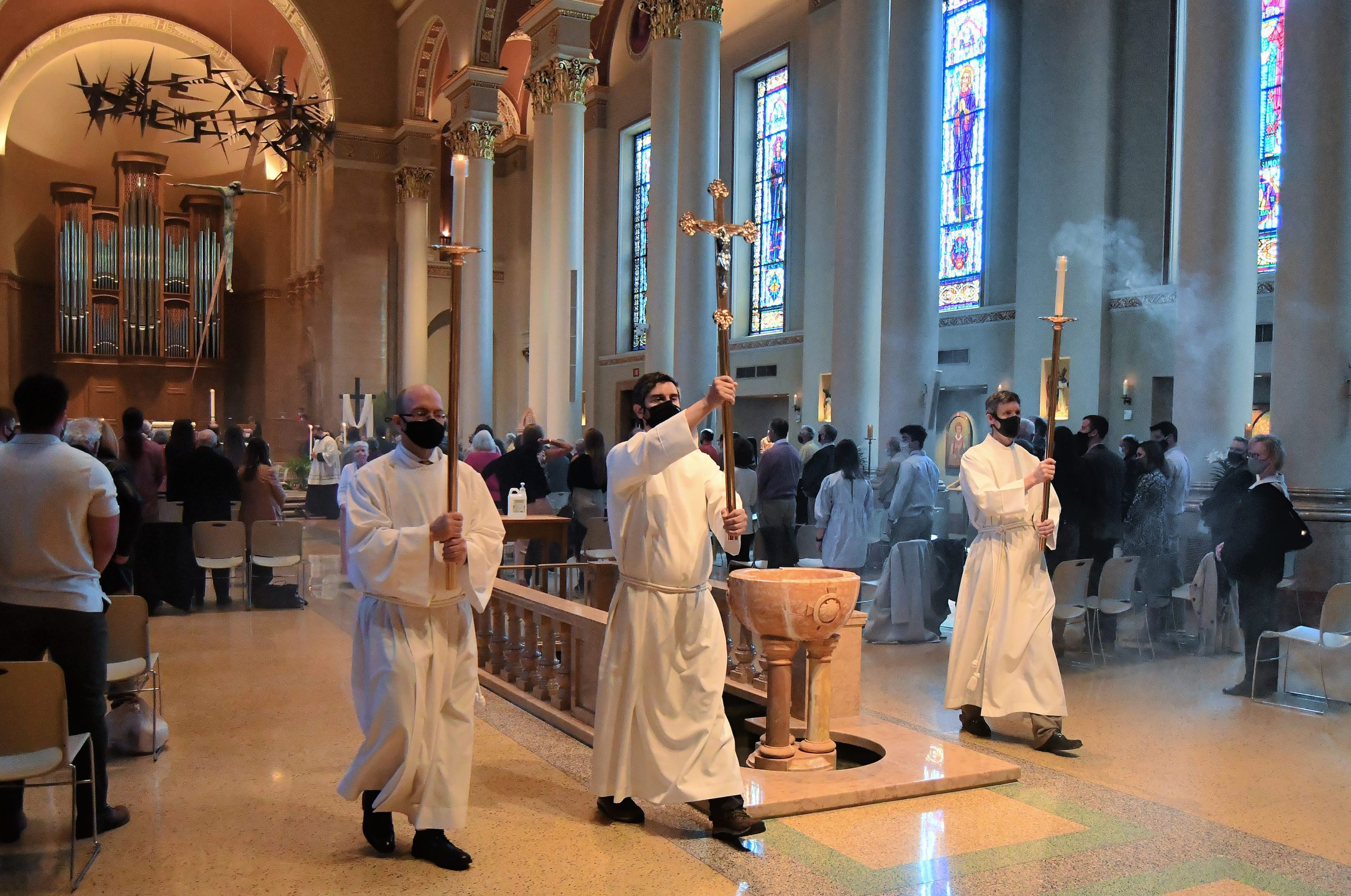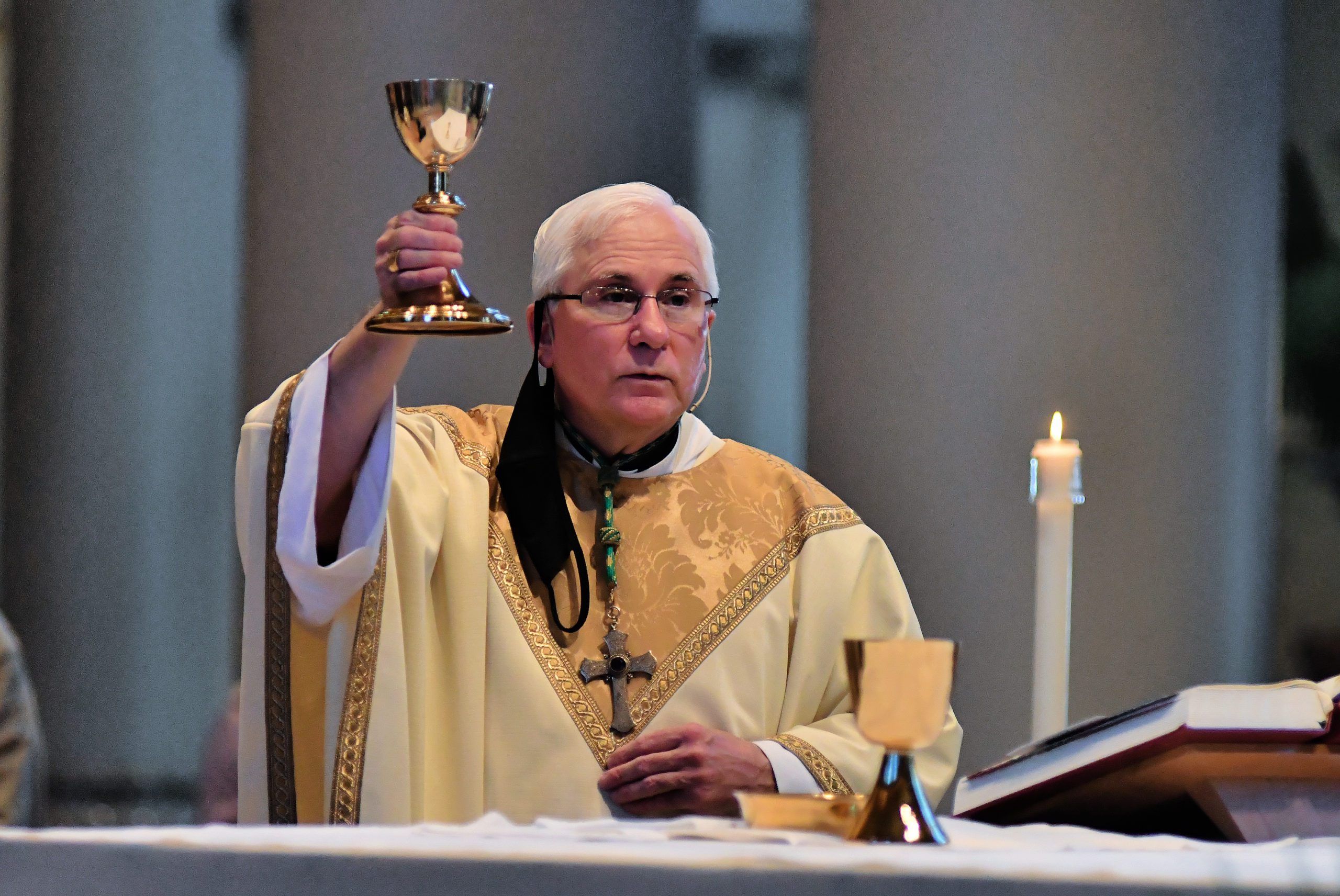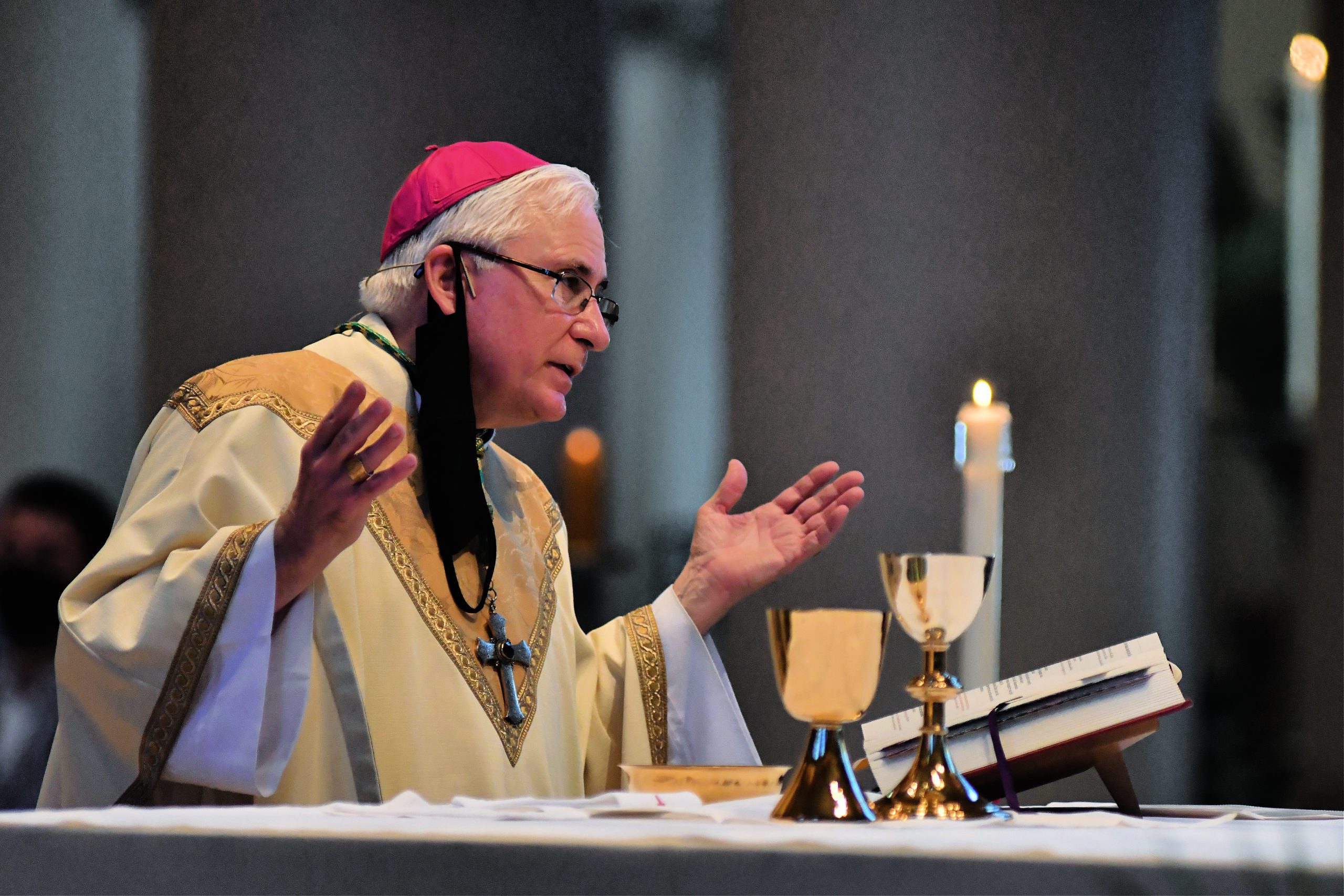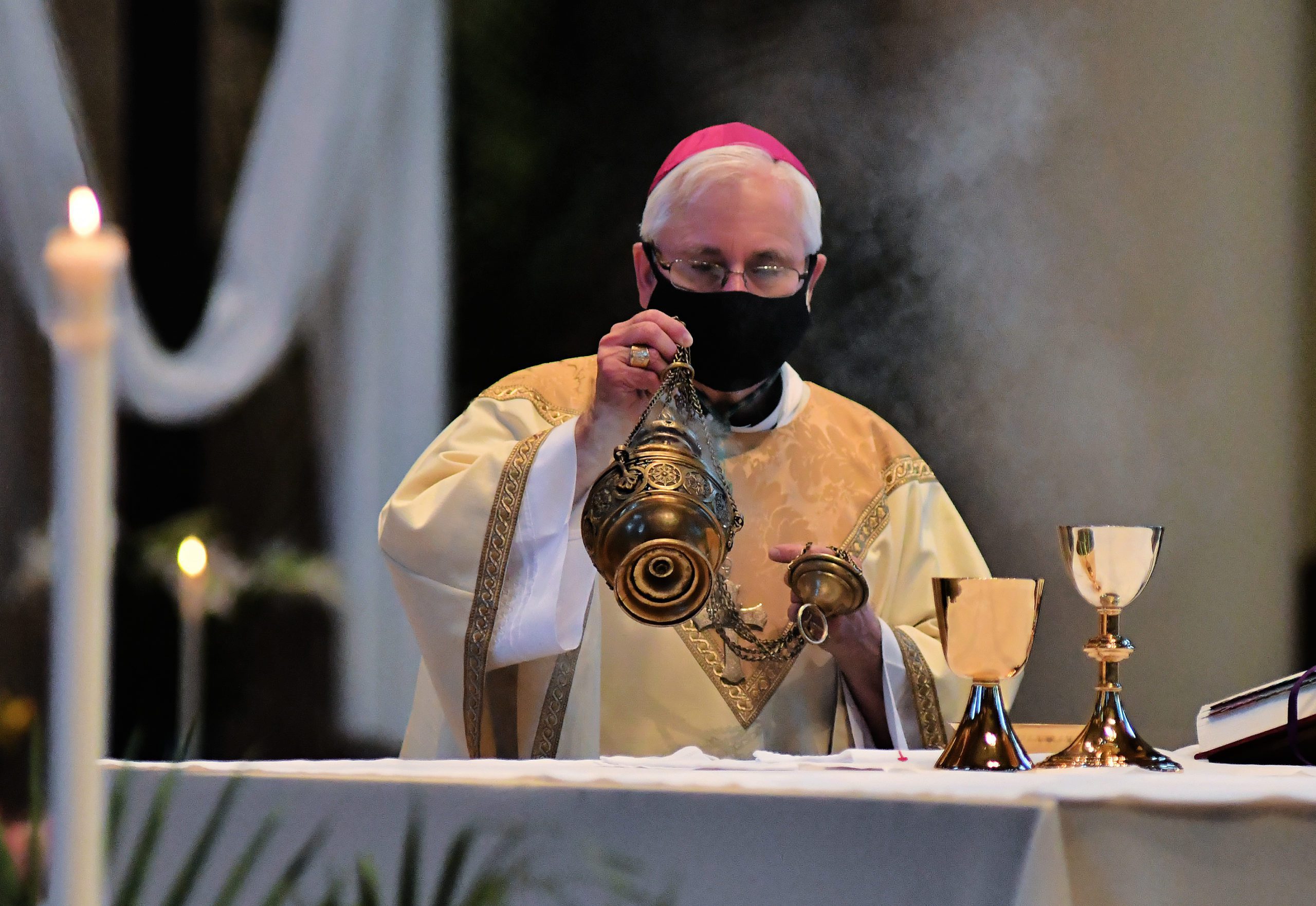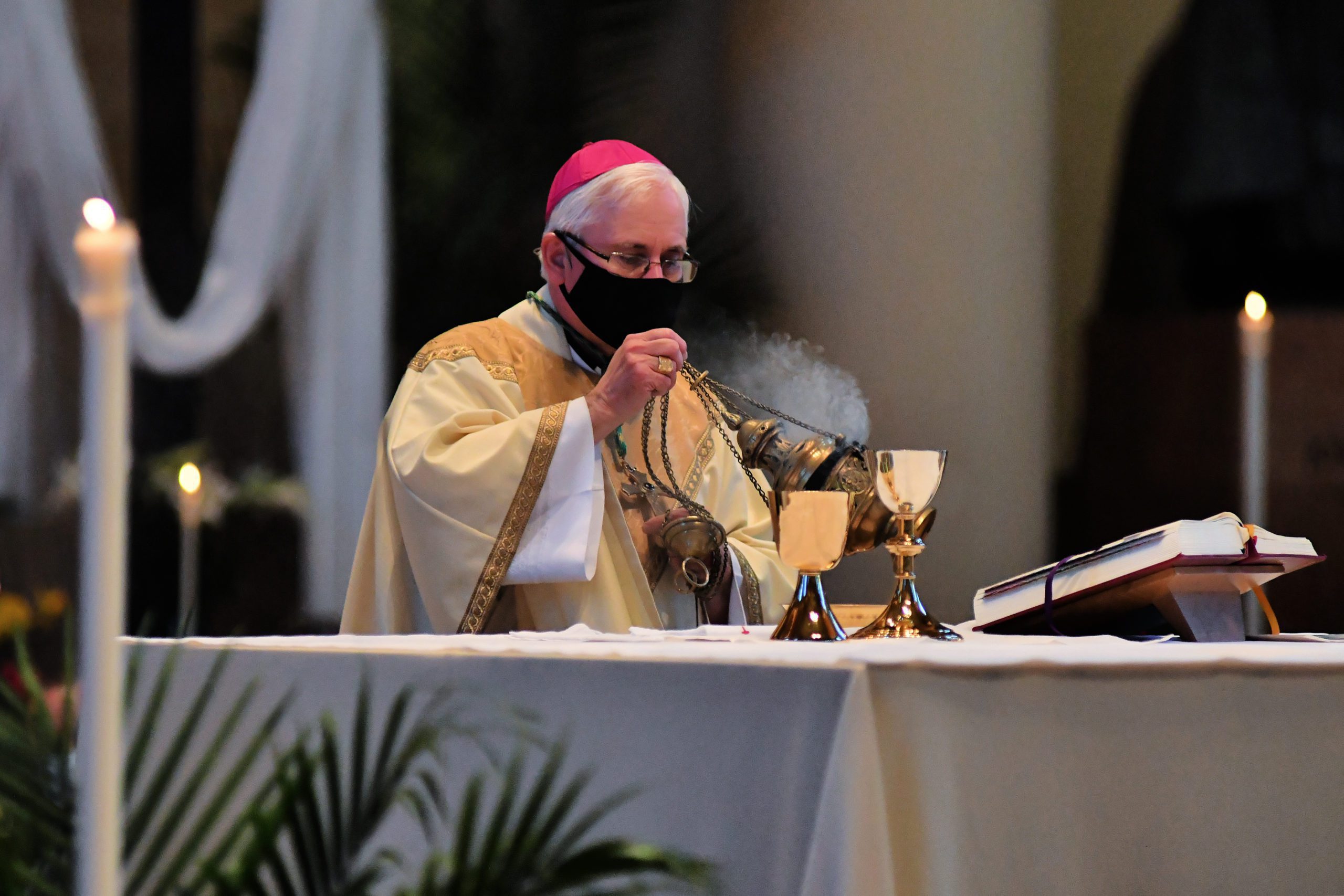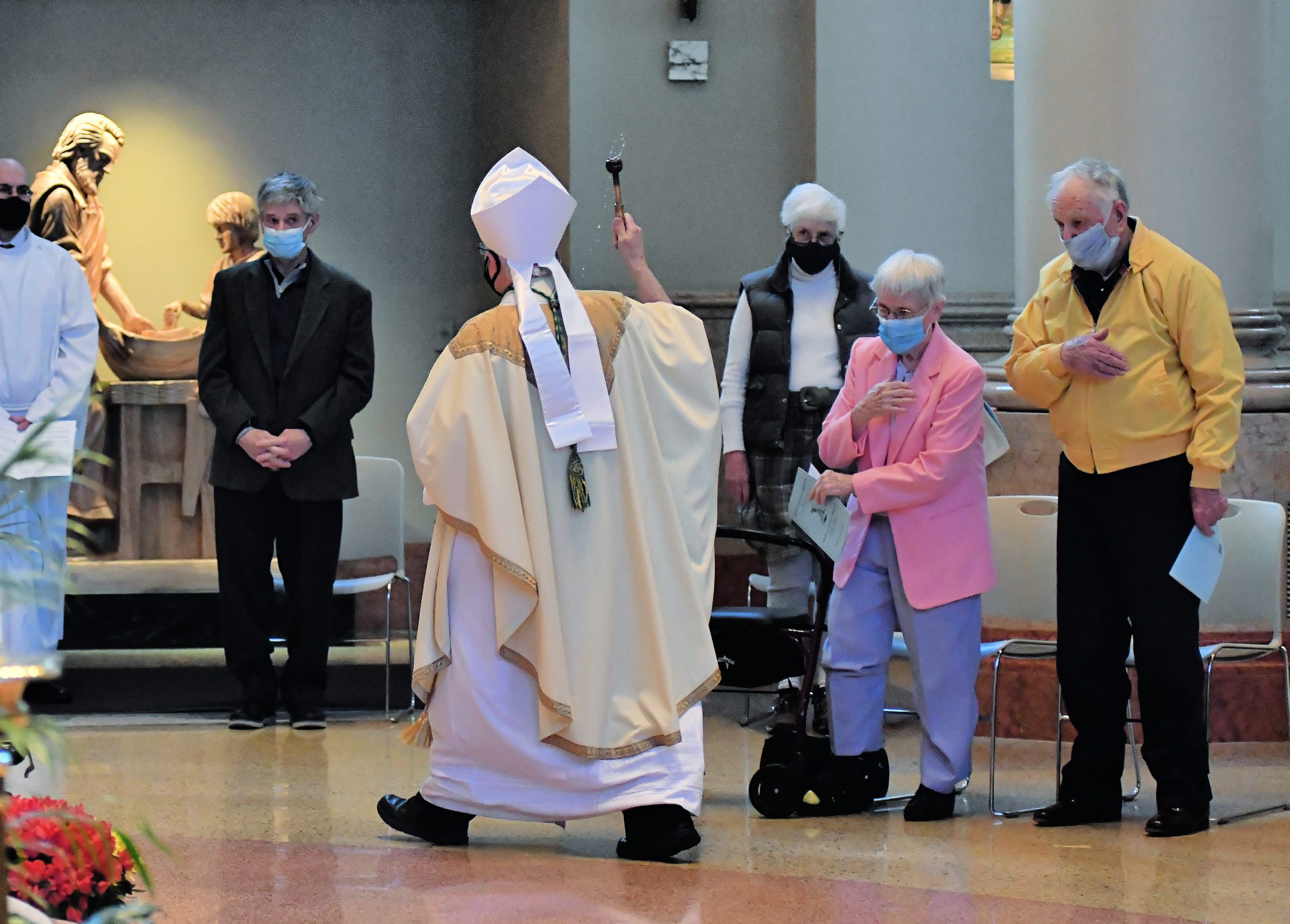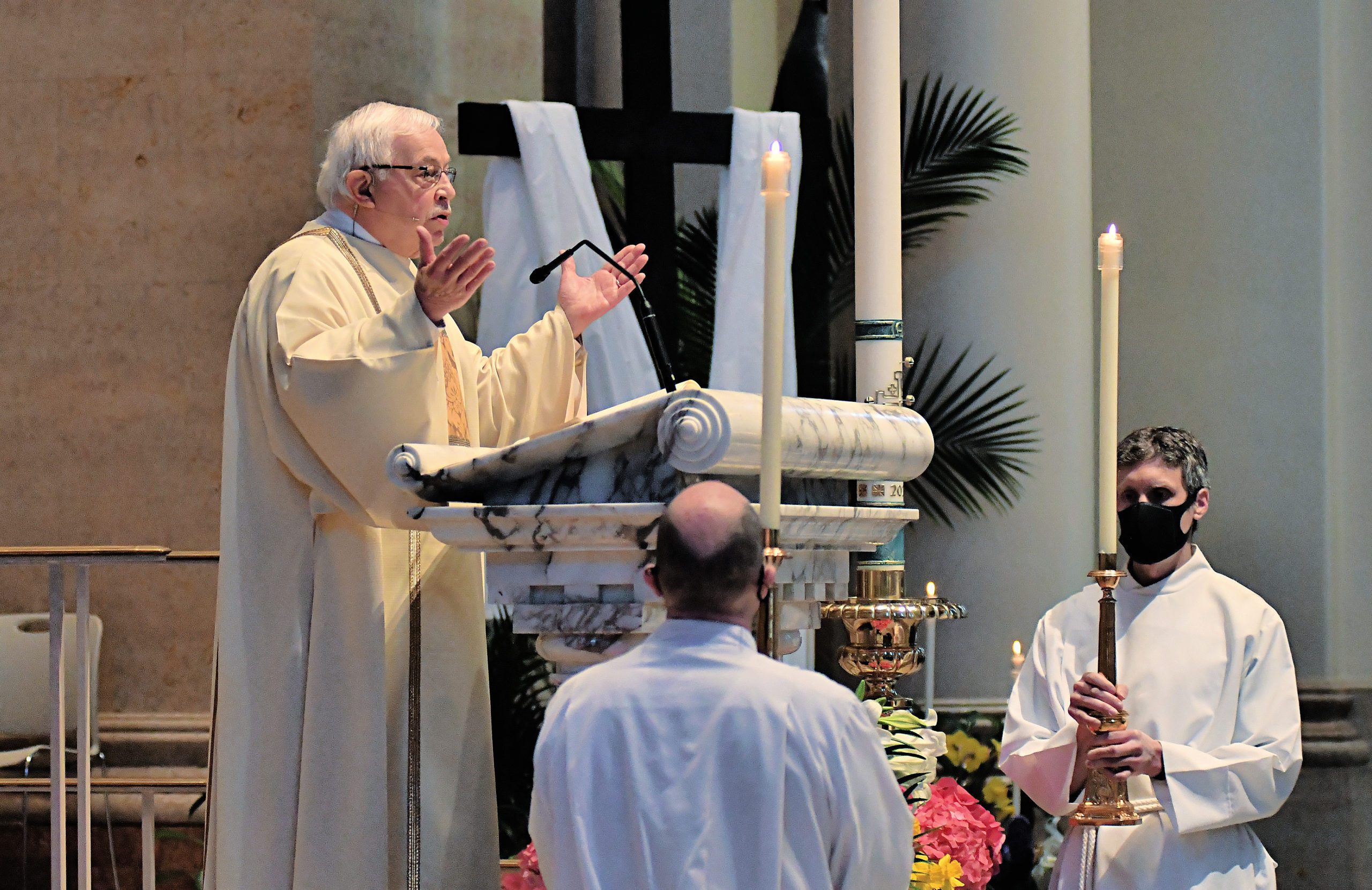Easter Sunday
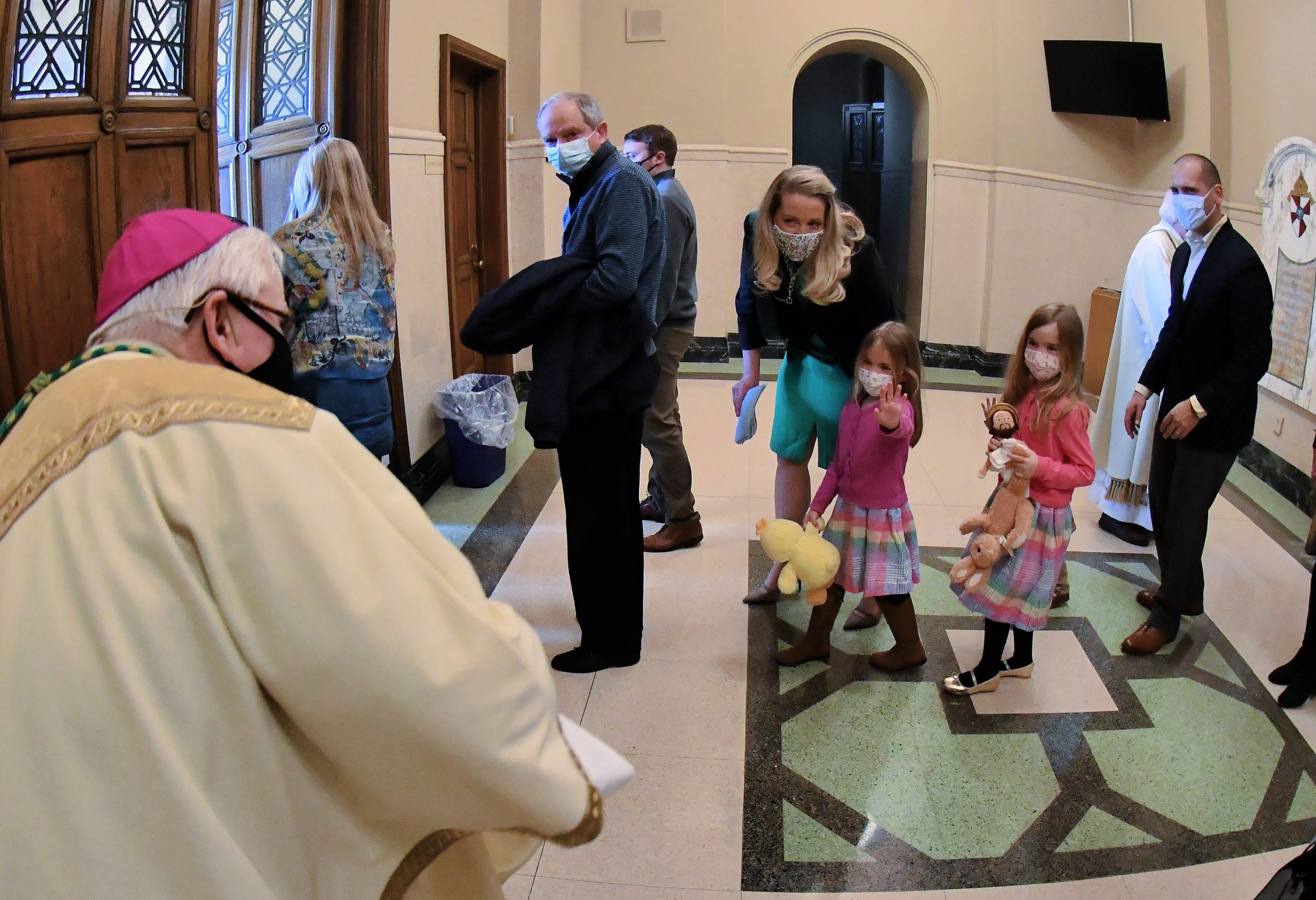
Bishop Jeffrey R. Haines greets worshippers after Easter Sunday Mass at the Cathedral of St. John the Evangelist. (Photo by David Bernacchi)
The traditional Easter Mass returned to the Cathedral of St. John the Evangelist on Sunday, April 4 — but at approximately 50 percent capacity.
After going all-virtual last year amid the global pandemic, Bishop Jeffrey R. Haines happily welcomed the faithful with a message of hope in the Resurrection.
In his homily, Bishop Haines recalled another Sunday when he was serving his former parish, St. Francis Cabrini in West Bend. As was typical before most weekend Masses, the sacristy was bustling with activity, and that day was no exception.
“There were parishioners who were preparing to perform their liturgical ministries, there were readers preparing their scriptures, altar servers, the sacristan, the deacon and ushers. There was the leader of the liturgy of the Word — age appropriate for children — and there were others present for special occasions. On this day, we had Brownies who were getting ready to sell Girl Scout cookies after Mass and some parishioners who just wanted to wander into the space because they wanted to be part of the conversation,” he said. “But the usual boisterous amalgamation of voices was interrupted that morning when Katie, who was one of our parish secretaries, entered the room and it was clear she had some news to share. She told us of one of our venerable senior members of the congregation who passed away the day before.”
Because the woman was beloved by many, there was a pall of complete silence that followed that descended upon them like a cloud of melancholy. For a lengthy moment, nobody uttered a word. Then John, who was one of the readers assigned to that Mass, spoke up.
“He was a very spirit-filled, faithful man. He flashed a smile and interjected, ‘Well, she is one of the lucky ones,’” said Bishop Haines. “His statement kind of caught us off guard and his words met with some uncomfortable stares and some had subtle, yet startled, gasps.”
Not backing down, John scanned the room and added that the woman would be getting to heaven and sharing in the Resurrection. He reminded the group that she would be better off in heaven than the rest of them still on earth.
“Slowly, the impact of John’s rejoinder seemed to take hold and reminded the people of a Gospel truth that is deeply held but not always on the surface of our minds,” said Bishop Haines. “One by one, faces began to light up with smiles and a renewed realization of the power of God of life.”
The story shared by Bishop Haines served as an illustration that there are moments when everyone needs someone like John in their lives to offer an affirmation to bolster our faith in the Resurrection. For some, faith in the Resurrection seems to be more like a concept or theory, said Bishop Haines.
Bishop Haines used the example of Mary of Magdala, Peter and the Disciple Jesus loved, for as they encountered the empty tomb, they demonstrated faith in the Resurrection from the very beginning.
“The Disciple saw the tomb was empty except for the rolled-up cloths of the Lord and we were told how he saw and believed immediately following that observation,” he said. “But, there was a caveat, as they didn’t understand the Scripture that he had to rise from the dead. Mary of Magdala, Peter and the Disciple were caught somewhere between belief and unbelief.”
That same fluctuation between belief and disbelief is a thread throughout all four gospels. Even when the risen Christ appeared to the Disciples, there was the same fluctuation of joy and bewilderment.
“It would seem there is a spectrum of faith when it comes to belief in the Resurrection — faith in the Resurrection can seem vibrant and bold, yet at other times, our sense of the risen spirit of Jesus can dwindle,” said Bishop Haines.
All alternate between the spectrum of belief and disbelief throughout life. There are times when life is going well that there is no doubt, and still other moments when trials and tribulations of life take over and seem to diminish our faith.
“When we are faced with difficult times, our Easter faith can take a beating,” said Bishop Haines. “We struggle to find meaning and wonder where our Lord is. Our faith can be firm as well as unsteady. Wherever you are today, you are in the right place. This is a place where our faith in the resurrection can be nourished and replenished.”
Because Jesus understood the challenges each would have with their faith, he gave us his Body and Blood the night before he died at the Last Supper, said Bishop Haines. In receiving the sacred food of the Eucharist, Jesus can nourish our spirits and renew and embolden our faith no matter if we are in good times or difficult times.
“In the celebration of the Mass, we really and truly encounter the risen Christ,” he said. “In the Mass, Jesus is here with us and through the grace of this holy Sacrament, we are literally made one with him; every celebration of the holy Eucharist is Easter Sunday again. Thanks be to God; each celebration of the Eucharist brings us a communal experience — the Eucharist gathers believers from all over. This sacred meal brings us together to reassure each other in the faith of the risen Lord. No matter what is going on in our lives, our God is a god of life. We ourselves are transformed and the spirit of the resurrection comes alive within us so much so that we become witnesses to the God of life.”


